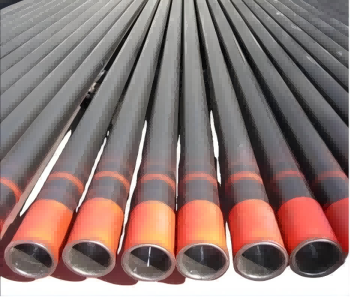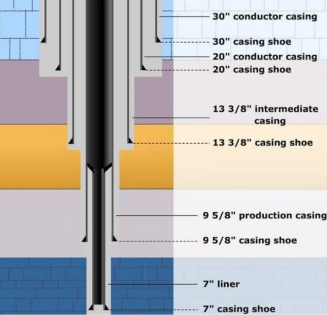A 7-inch Liner
A 7-inch liner in an offshore drilling rig functions primarily to provide structural integrity to the lower section of the wellbore and to isolate troublesome geological formations while allowing drilling to continue to a greater depth.
Its use is a cost-effective alternative to running a full string of casing back to the surface.
Key functions
-Wellbore stability: The primary function is to support weak, unstable, or potentially collapsing formations in the open hole section, preventing the borehole walls from caving in.
-Formation isolation: It seals off various problematic zones, such as high-pressure areas, zones of lost circulation(where drilling fluid escapes into the formation), or unstable shales. This isolation is critical for maintaining well control.
-Enabling deeper drilling: By isolating problem zones, the liner allows for a change in the drilling fluid(mud) weight to handle different pressure regimes encountered deeper in the well, thereby enabling further drilling.

-Cost efficiency: Using a liner(which does not extend to the surface) saves a significant amount of steel and cementing material compared to a full casing string, which drastically reduces well construction costs and the load on the wellhead and surfacing casing.
-Structural support: It provides a strong, permanent section of the wellbore for hanging subsequent, smaller diameter casing strings or production equipment.
-Well control: The cemented lined is a critical barrier in the well’s pressure containment system, helping to manage and control formation pressures to prevent kicks and blowouts.
Typical Applications
-A 7-inch liner is often used as an intermediate liner to bridge the gap between a larger casing string(e.g. 9 5/8 inch) and a smaller production section, or as a production liner across the final reservoir interval.
-The liner is secured in place by a liner hanger system, which anchors it inside the bottom of the previous casing string with a necessary overlap(often 300-500 feet), and it is then cemented into the annulus.


